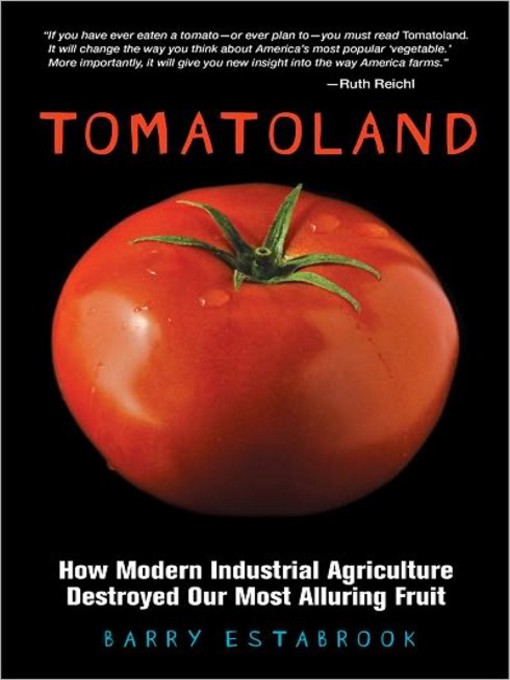
Tomatoland
How Modern Industrial Agriculture Destroyed Our Most Alluring Fruit
فرمت کتاب
audiobook
تاریخ انتشار
2011
Lexile Score
1280
Reading Level
10-12
نویسنده
Pete Larkinناشر
Tantor Media, Inc.شابک
9781452674506
کتاب های مرتبط
- اطلاعات
- نقد و بررسی
- دیدگاه کاربران
نقد و بررسی

Barry Estabrook's exposÄ of the winter-tomato industry peels back the skin on a tasteless fruit, bathed in chemicals, gassed with ethylene to look ripe, and picked by modern-day slaves. Pete Larkin's narration is straightforward and engaging. It's clear that the treatment of migrant workers in Florida is inexcusable in a first-world democratic country, but Larkin lets the inhumanity speak for itself and wisely doesn't amp up the outrage. Estabrook interviews many scientists, lawyers, growers, and tomato pickers involved in the Florida winter-tomato industry, and Larkin clearly distinguishes between quotations and narrative without resorting to inauthentic accents. It's an unblemished performance. Don't buy winter tomatoes; grow them in your yard, shop at farmers' markets, and buy canned tomatoes (from California) instead. A.B. Winner of AudioFile Earphones Award (c) AudioFile 2011, Portland, Maine

May 16, 2011
In this eye-opening exposé, Vermont journalist Estabrook traces the sad, tasteless life of the mass-produced tomato, from its chemical-saturated beginnings in south Florida to far-flung supermarkets. Expanding on his 2010 James Beard Awardâwinning article in Gourmet magazine, Estabrook first looks at the tomato's ancestors in Peru, grown naturally in coastal deserts and Andean foothills, with fruit the size of large peas. Crossbreeding produced bigger, juicier varieties, and by the late 19th century, Florida had muscled in on the U.S. market, later benefiting from the embargo on Cuban tomatoes; the Sunshine State now produces one-third of the fresh tomatoes in this country. To combat sandy soil devoid of nutrients, and weather that breeds at least 27 insect species and 29 diseases that prey on the plants, Florida growers bombard tomato plants with a dizzying cocktail of herbicides and pesticides, then gas the "mature greens" (fruit plucked so early from the vines that they bounce without a scratch) with ethylene. Behind the scenes, moreover, there exists a horrendous culture of exploitation of Hispanic laborers in places like Immokalee, where pesticide exposure has led to birth defects and long-term medical ailments. Estabrook concludes this thought-provoking book with some ideas from innovators trying to build a better tomato.

























دیدگاه کاربران